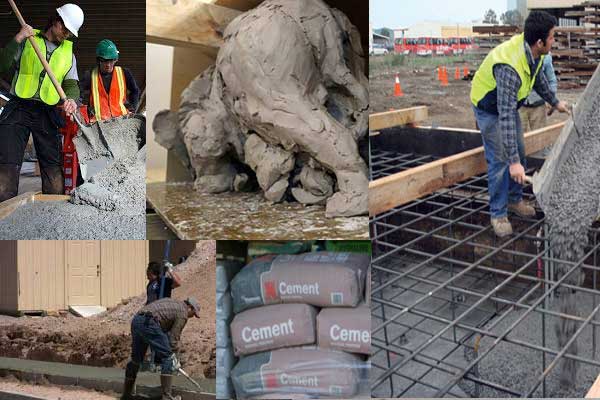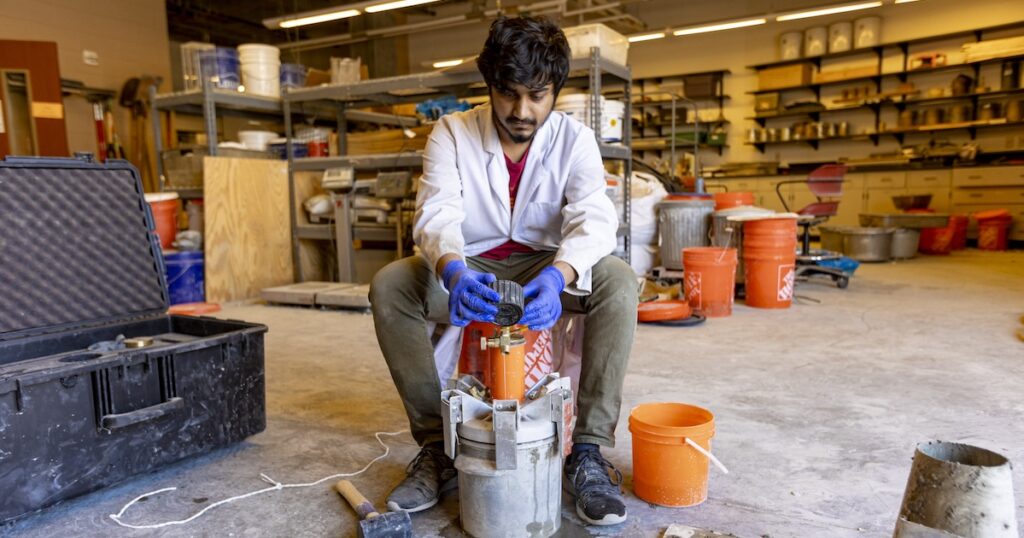Understanding the Various Applications of General Engineering Concrete in Diverse Industries
When you think about the numerous methods basic engineering concrete effects numerous markets, you'll find its applications are both wide and essential. From giving tough foundations for transport networks to sustaining ingenious power remedies, this product plays a crucial function in shaping our framework. What regarding its impact on city advancement and environmental engineering? Discovering these facets can expose a lot more than you could expect.
The Function of Concrete in Building And Construction and Structure Projects
Concrete plays an important duty in building and building projects, composing about 70% of all materials used in modern structures. You'll locate it in structures, wall surfaces, and floorings, supplying stamina and durability. When you pick concrete, you're going with a material that can stand up to weather condition problems, stand up to fire, and assistance heavy lots. Its convenience enables various applications, from domestic homes to towering skyscrapers.Mixing concrete with additives can enhance its residential properties, improving workability and setting times. You can also mold it right into various shapes, allowing for creative thinking in style. As you work with your tasks, think about the ecological benefits of using concrete, such as its capacity to decrease power intake in structures. Overall, concrete's dependability and adaptability make it a foundation of the building industry, ensuring that structures are not just practical but likewise risk-free and long-lasting.
Facilities Growth: Roadways, Bridges, and Tunnels
When it comes to framework development, roadways, bridges, and passages are essential components that attach areas and promote transportation. You rely upon these structures daily, whether you're commuting to function or traveling long ranges. General engineering concrete plays a crucial role in their construction and longevity. Its stamina and convenience allow designers to make robust roadways that stand up to rush hour and severe climate conditions.Bridges, typically extending rivers and valleys, require specifically created concrete to ensure security and long life. The usage of reinforced concrete in tunnel construction not just supports significant weight but also boosts resistance against water seepage and ground motion.

Concrete in Transportation: Enhancing Flexibility and Security
As you browse with busy cities and country roads, the function of concrete in transport ends up being apparent, significantly improving both flexibility and safety and security. Concrete's sturdiness warranties that roads, paths, and bridges stand up to rush hour and harsh weather problems. This long life reduces the need for regular repairs, keeping your trips smooth and reliable.In addition, the design adaptability of concrete permits for cutting-edge frameworks like overpasses and passages, which properly reduce blockage and enhance web traffic flow. You'll notice that concrete surfaces likewise give much better grip, lowering the probability of crashes in damp conditions.Moreover, making use of concrete in railways assists maintain security and safety for trains, making your travels much more reliable. On the whole, concrete's payments to transport not only improve your movement however additionally considerably boost public safety, reflecting its crucial function in the framework you rely on everyday.

Energy Market Applications: From Nuclear Power Plant to Renewable Resource
In the power industry, concrete plays a significant role in the construction and operation of power plants and eco-friendly energy setups. You'll find it essential for developing durable foundations, supports, and containment structures that withstand extreme problems. In thermal nuclear power plant, strengthened concrete structures guarantee safety and security and resilience against heats and pressure. West Coast GE Concrete contractors.When it comes to renewable power, concrete is crucial for wind turbine bases, photovoltaic panel installs, and hydroelectric dams. It offers the stability required to harness energy properly. You might not understand it, however the concrete used in these applications is specifically formulated to meet particular efficiency criteria, like resilience and resistance to environmental variables
Ingenious Concrete Solutions in Environmental Design

The Effect of Concrete on Urban Development and Landscape Design
Concrete plays an essential duty fit city growth and landscape design, affecting whatever from infrastructure sturdiness to visual appeal. When you consider cityscapes, concrete her response frameworks like bridges, roads, and structures come to mind, offering a strong structure for urban life. You'll discover how well-designed concrete pathways and plazas improve public spaces, making them much more welcoming and functional.In landscape design, concrete deals adaptability, making it possible for creative designs for patio areas, keeping walls, and attractive functions. You can develop special outdoor spaces that mix flawlessly with nature while maintaining structural stability. In addition, concrete's capacity to withstand weather extremes assurances longevity, lowering the need for frequent repair services.
Future Trends and Improvements in General Design Concrete
As urban landscapes develop, the demand for ingenious concrete remedies is driving innovations generally engineering. You'll discover fads leaning in the direction of green products and sustainable methods. Researchers are concentrating on establishing high-performance concrete that lowers environmental influence without sacrificing strength.Next-gen ingredients and blends, like recycled accumulations and bio-based materials, are obtaining grip, boosting sturdiness and reducing carbon footprints. Smart concrete innovation is likewise emerging, incorporating sensors that check architectural health in real-time, permitting proactive maintenance.You could locate that 3D printing with concrete is coming to be more viable, allowing complicated designs and faster construction timelines. Furthermore, the assimilation of self-healing concrete gets on the increase, ensuring durability and reducing repair service expenses.
Often Asked Inquiries
What Are the Environmental Effects of Concrete Production?
Concrete production generates significant carbon emissions, eats water, and diminishes natural deposits. You can reduce these impacts by exploring lasting alternatives, maximizing mix layouts, and integrating recycled materials to lower your environmental footprint and enhance sustainability.
Just How Does Concrete Compare to Various Other Building Materials?
Concrete's resilience and stamina often outperform products like wood and steel. It's versatile, cost-efficient, and energy-efficient, yet its ecological impact can be substantial. You'll intend to consider these elements when selecting building products.
What Are the Various Kinds Of Concrete Available?
There're numerous types of concrete available, consisting of standard, strengthened, high-strength, lightweight, and decorative. Each type offers certain objectives, so you can select the one that best fits your task's requirements and demands.
Just How Is Concrete Recycled and Recycled in Building?
You can reuse concrete by crushing it into aggregate, which you then reuse in brand-new building and construction jobs (West Coast General Engineering industrial concrete). This procedure decreases waste, lowers prices, and reduces the environmental impact of sourcing new products for your builds
What Precaution Are Required When Working With Concrete?
When functioning with concrete, you should use safety gear, like handwear covers and goggles, assurance correct ventilation, and make use decorative concrete repair of risk-free training methods. Constantly adhere to security standards to avoid injuries and preserve a protected workplace.